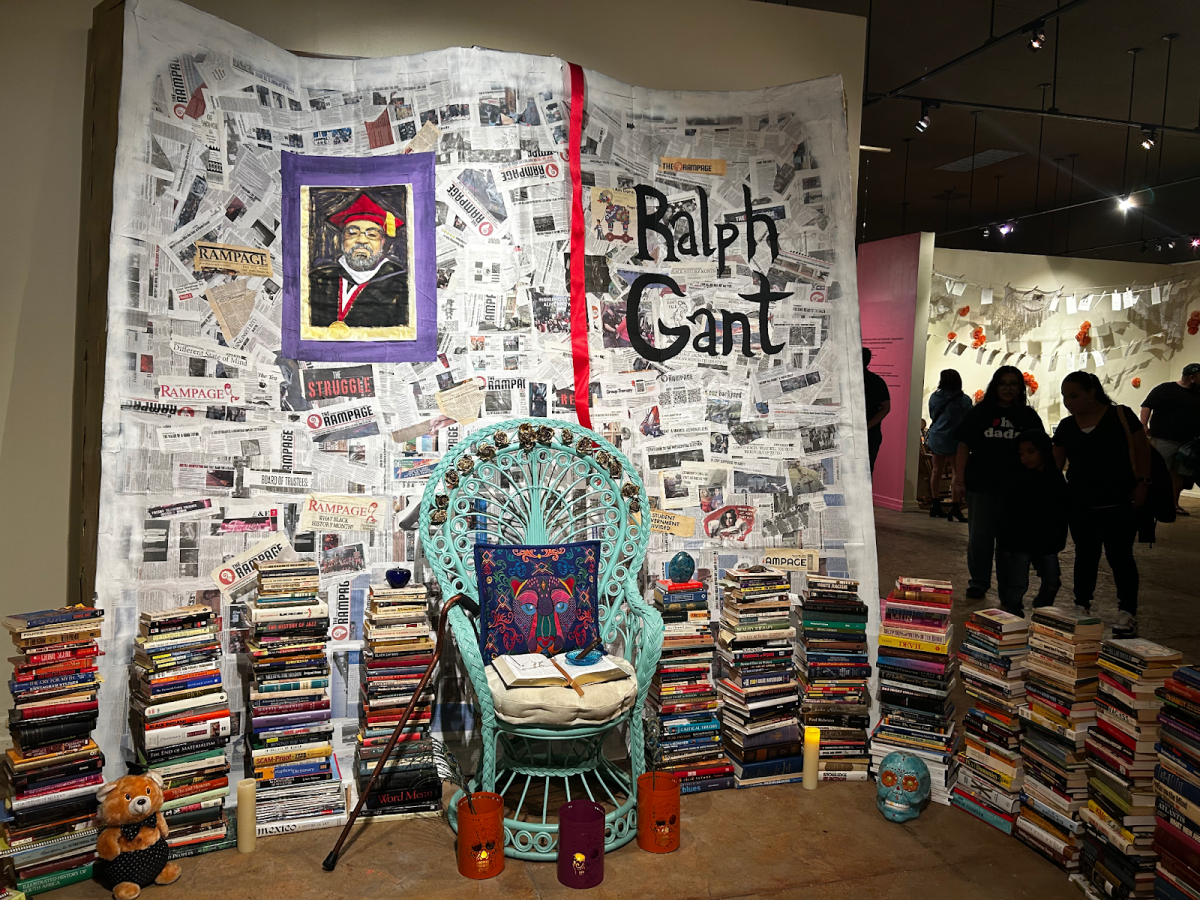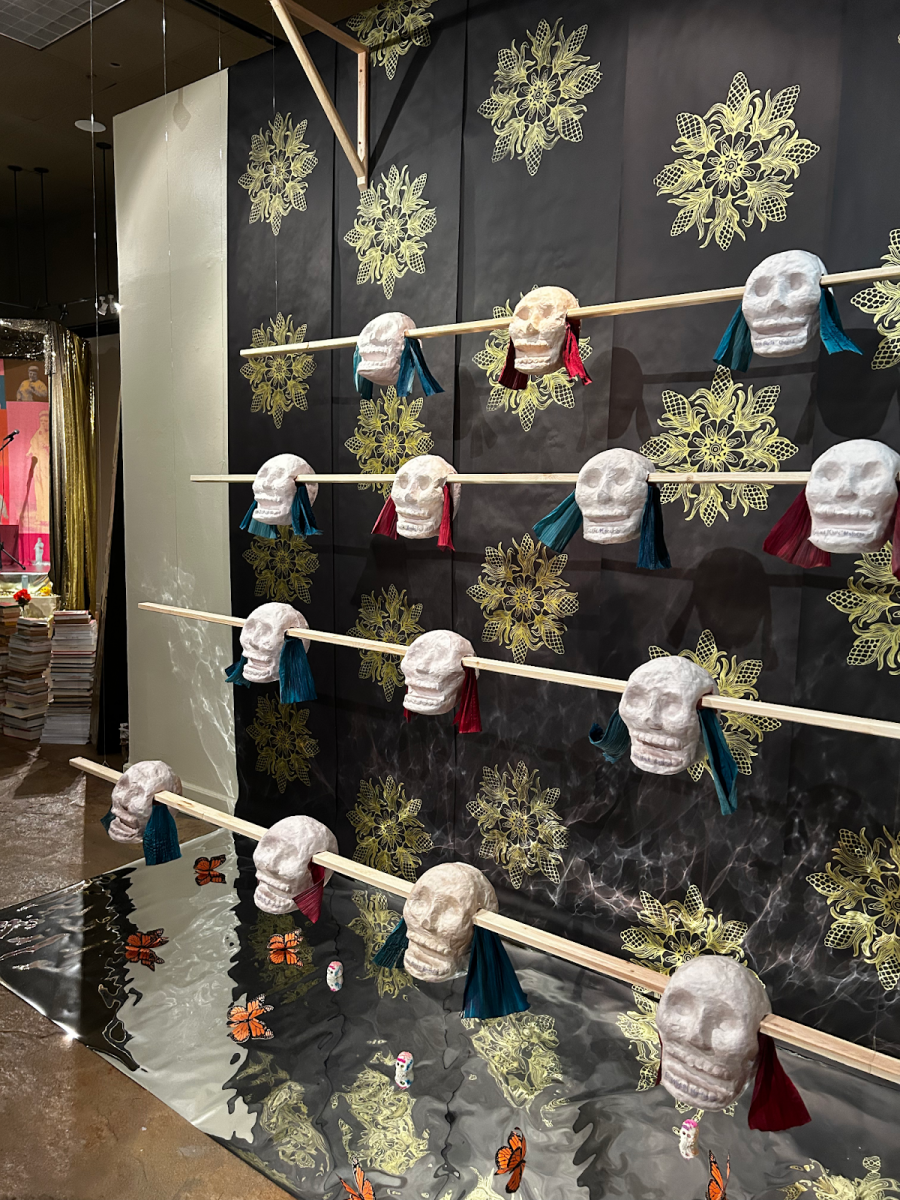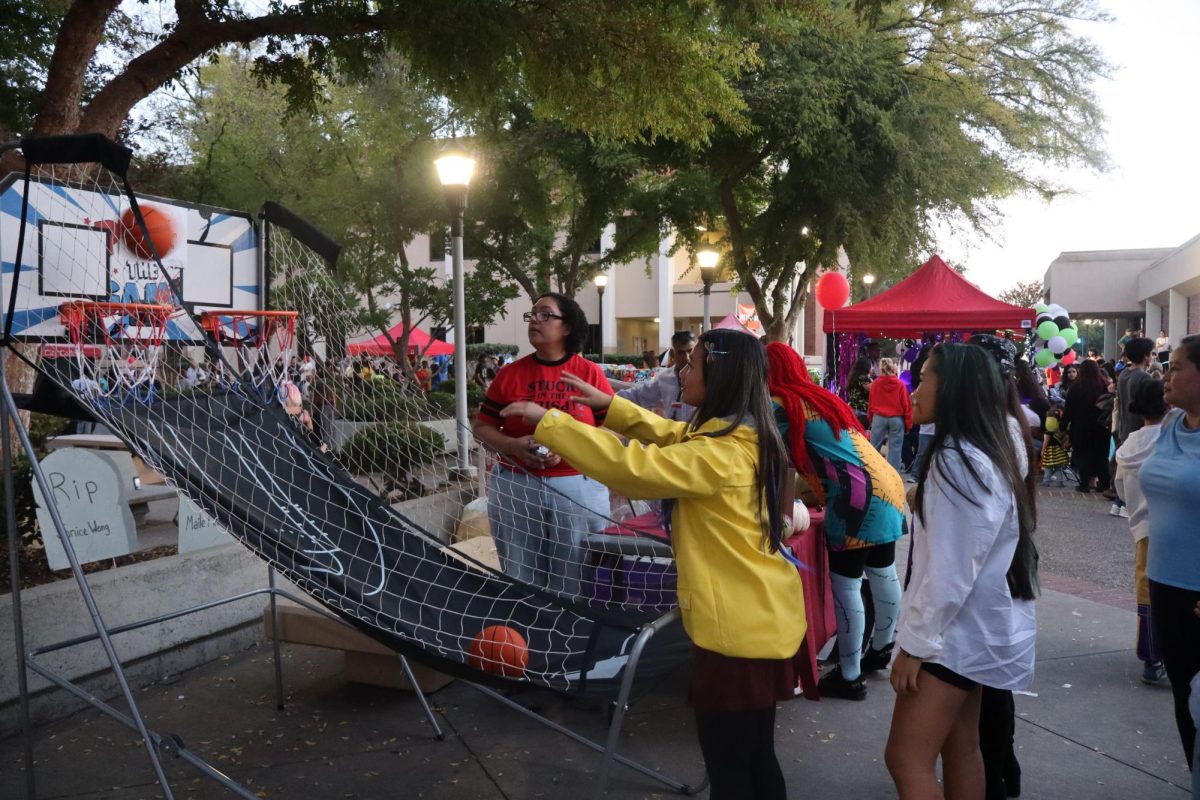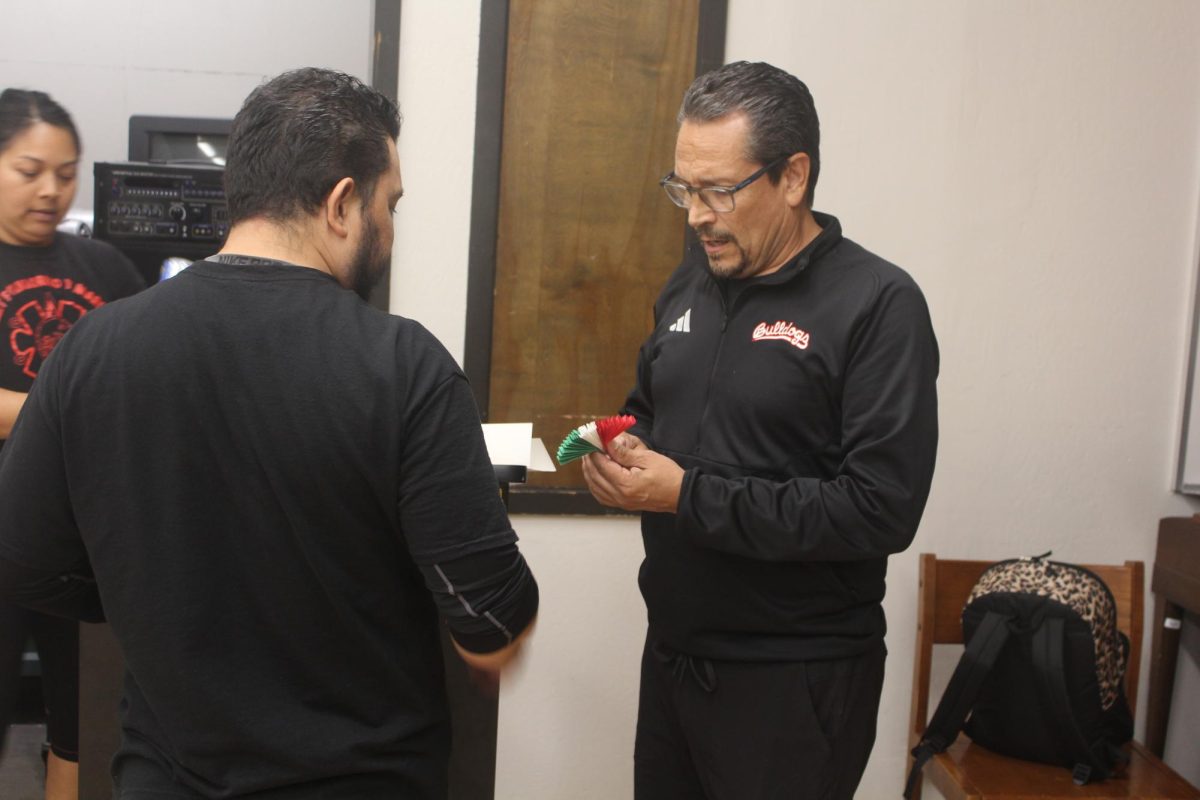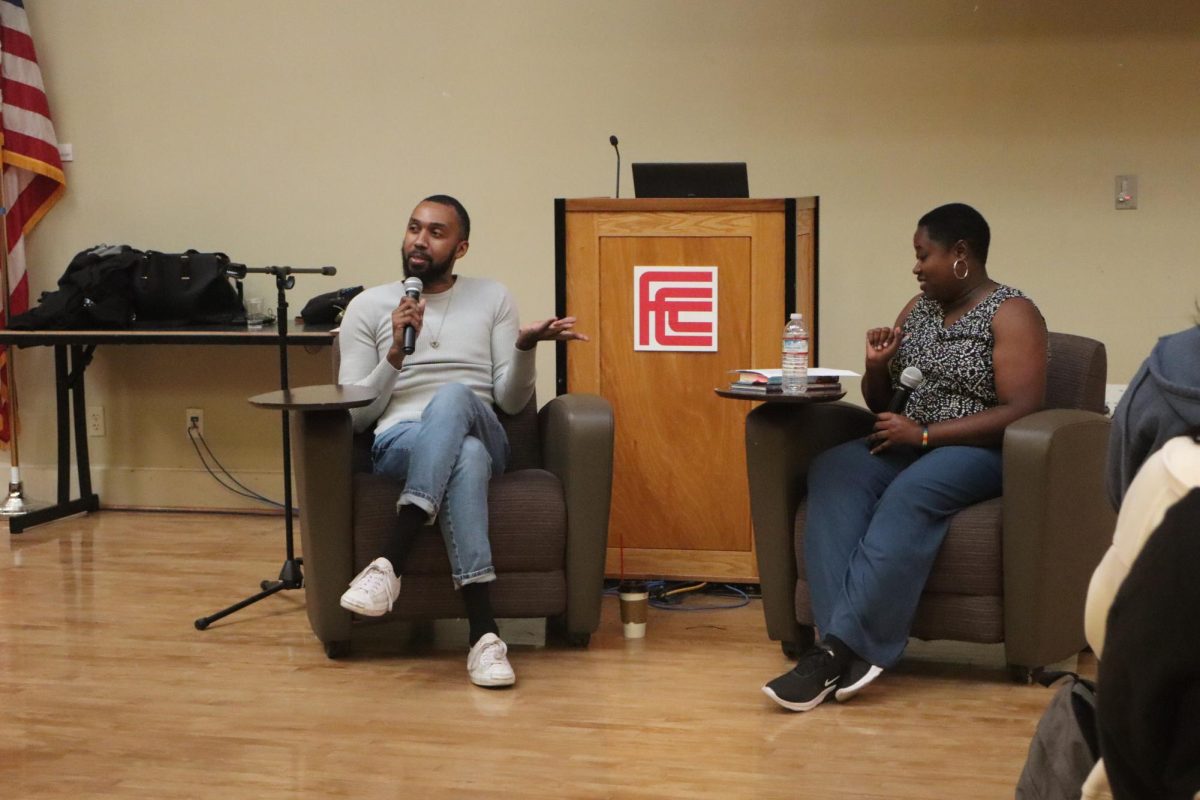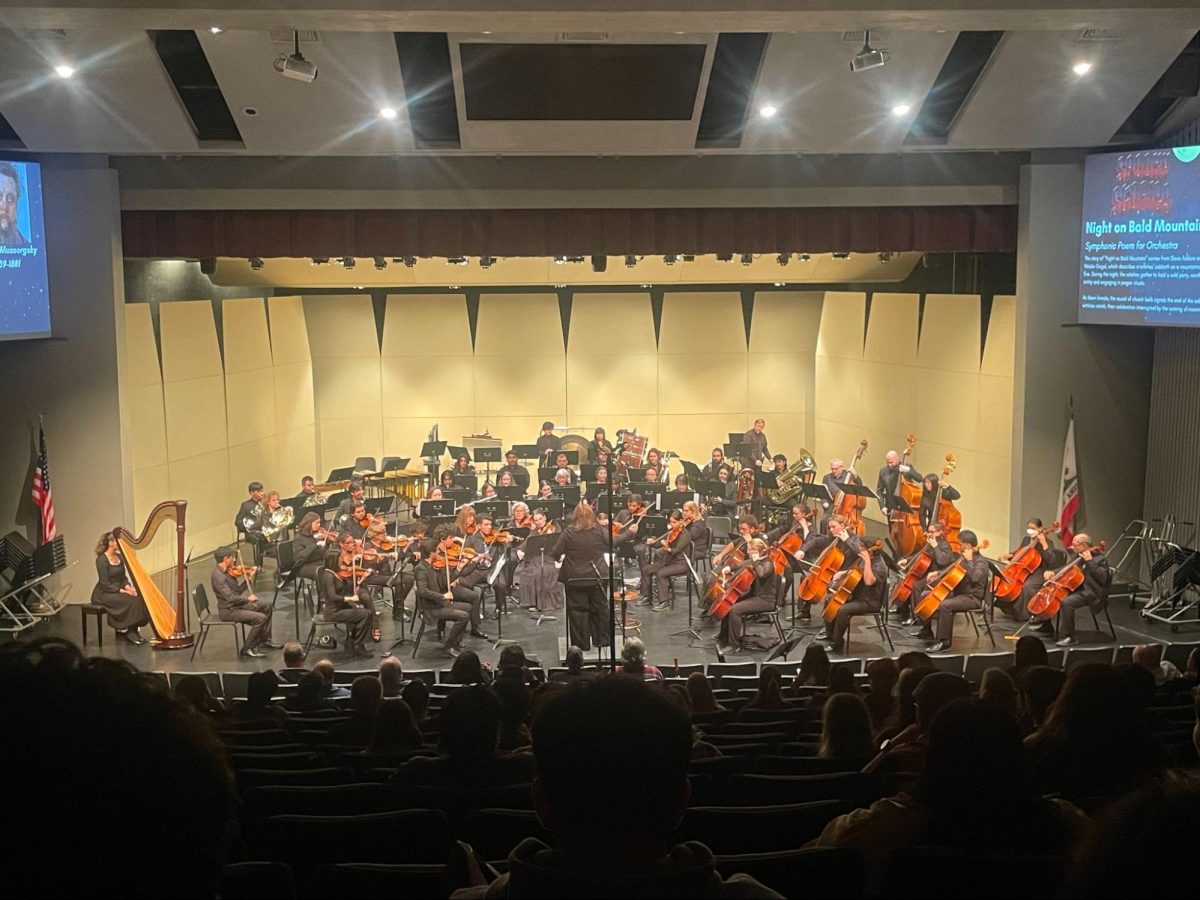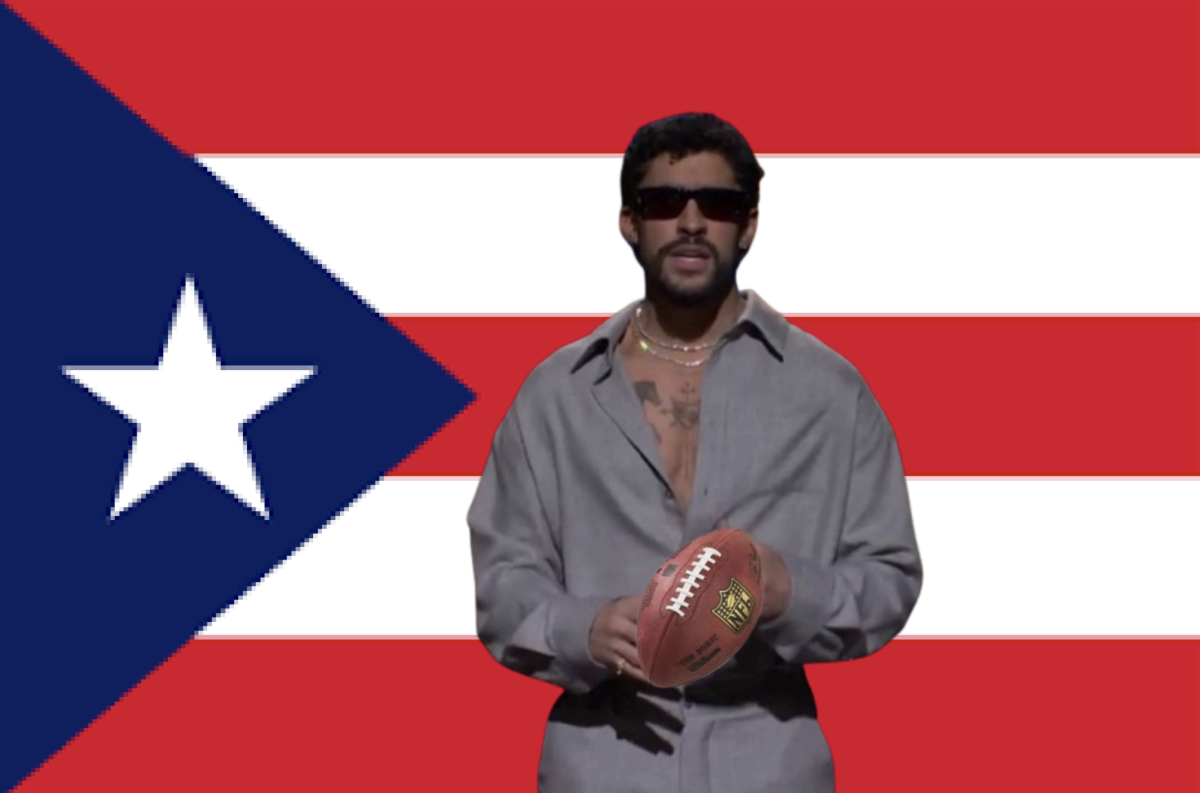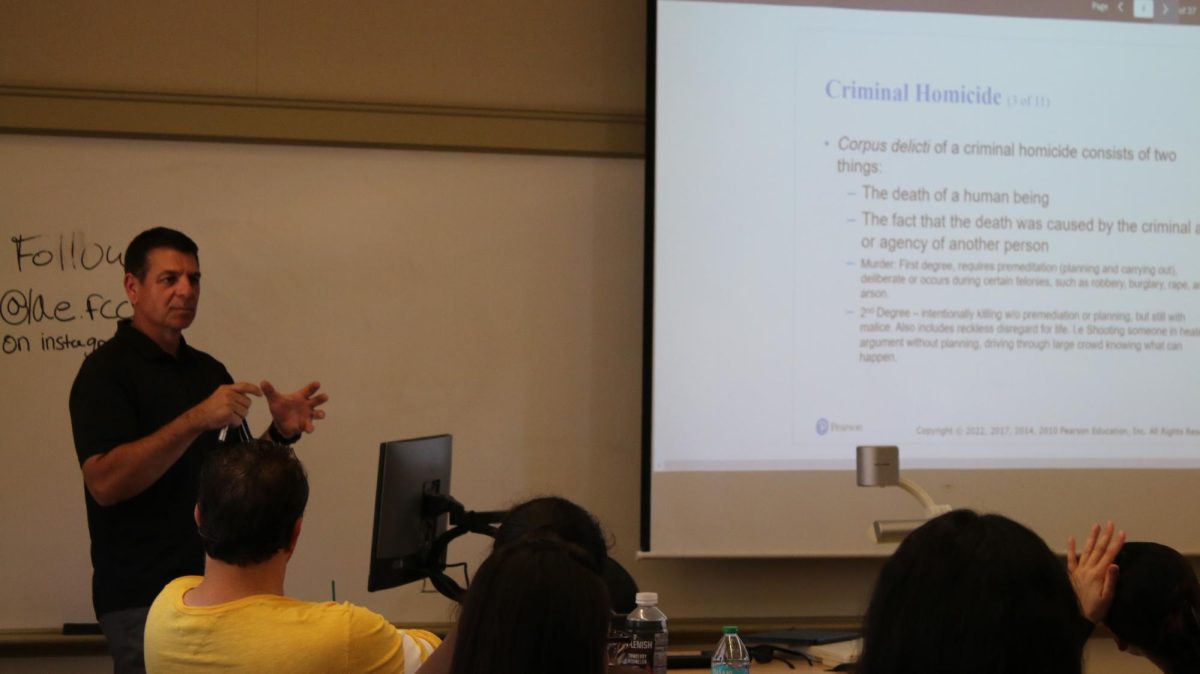Arte Américas had its opening reception for their recent art exhibit, “Monumental Figures,” a Día de los Muertos (Day of the Dead) themed exhibition that featured ofrendas (alters) that honored impactful people in the artists’ communities on Oct. 2. The exhibit is set to be open until Nov. 23. The gallery revolved around themes of remembrance and reunion.
Artist and Fresno City College alumni Alexandria Ramos O’Casey created her ofrenda in remembrance of Ralph Gant, a former FCC communications professor who passed away at the age of 67 in 2013. Gant taught at Fresno City College for over 25 years, but prior to that, Gant worked with the youth as a member of the Black Panther Party, according to Ramos O’Casey and her mother, Loretta.
“Ralph Gant was like a second father to me. He was my mom’s best friend, and he was a major influence on my life, and really thousands of people,” Ramos O’Casey said.
Ramos O’Casey spoke about the importance of archiving information and highlighted political issues with her usage of Rampage newspapers.
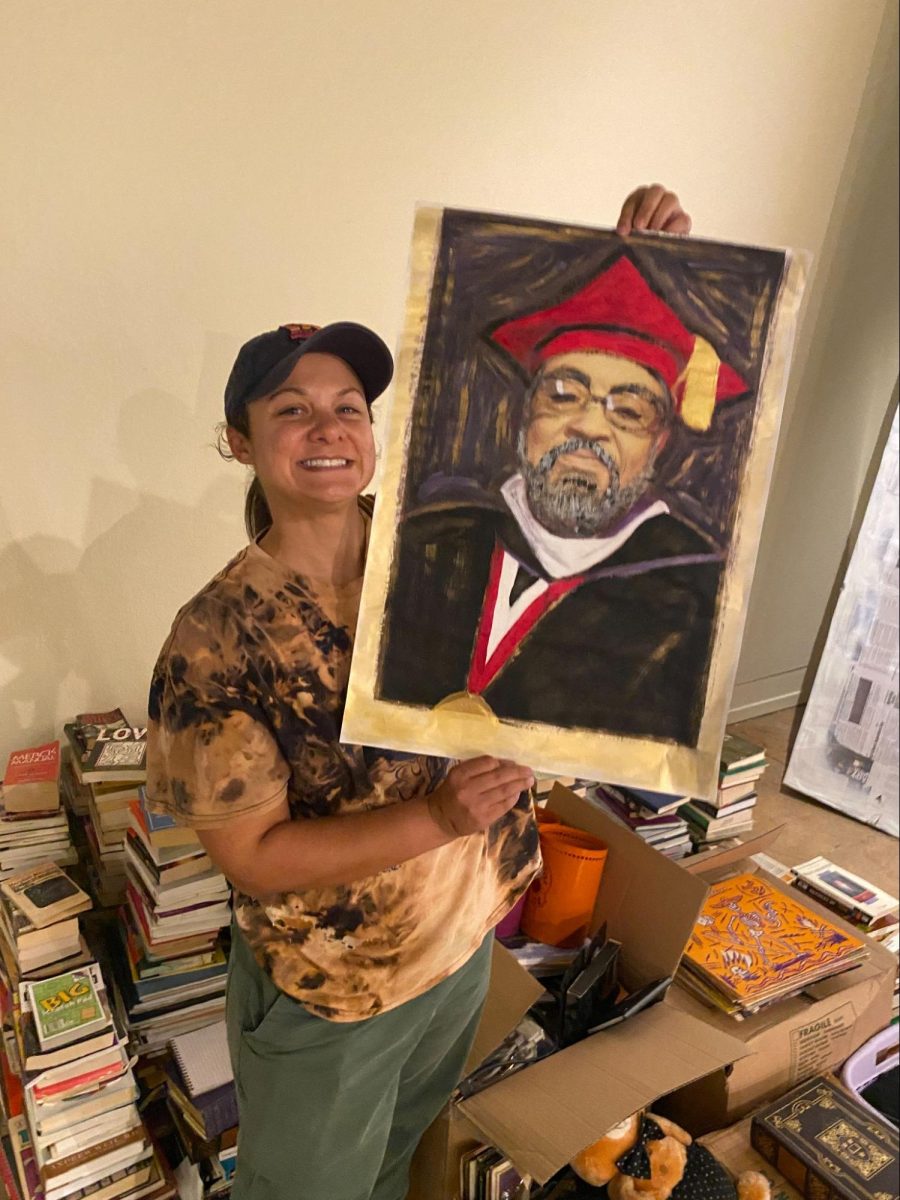
Gant’s autobiography that was left unfinished is displayed in the middle of the ofrenda. Ramos O’Casey explained that alongside being a Black Panther, Gant wanted to write his experiences about being queer, disabled and part indigenous.
“I think it comes to us doing proper source citation of where we get most of our history and our knowledge of movement work and community work, it comes from those cultures primarily,” Ramos O’Casey said.
Ramos O’Casey linked the books in her exhibit back to Gant’s work as a scholar and teacher.
“Given how much he taught, and how much he spent his time learning to give knowledge to others, we just thought it was right when ‘Monumental Figures’ came up to do something that commemorated him,” Ramos O’Casey said.
Artist Maria Cristina Tavera honored the late Mexican singer and songwriter, Francisca Viveros Barradas, known professionally as Paquita la del Barrio. Tavera showcased Paquita’s work of empowering women by flipping the lyrics of popular traditional songs.
“I think sometimes we forget the struggle that the women had before us, that they fought for our rights and they fought for us to have a voice,” Tavera said. “I’m sure there were so many people that were dismissive to her, and instead of just being angry, she actually turned that frustration into these beautiful lyrics.”
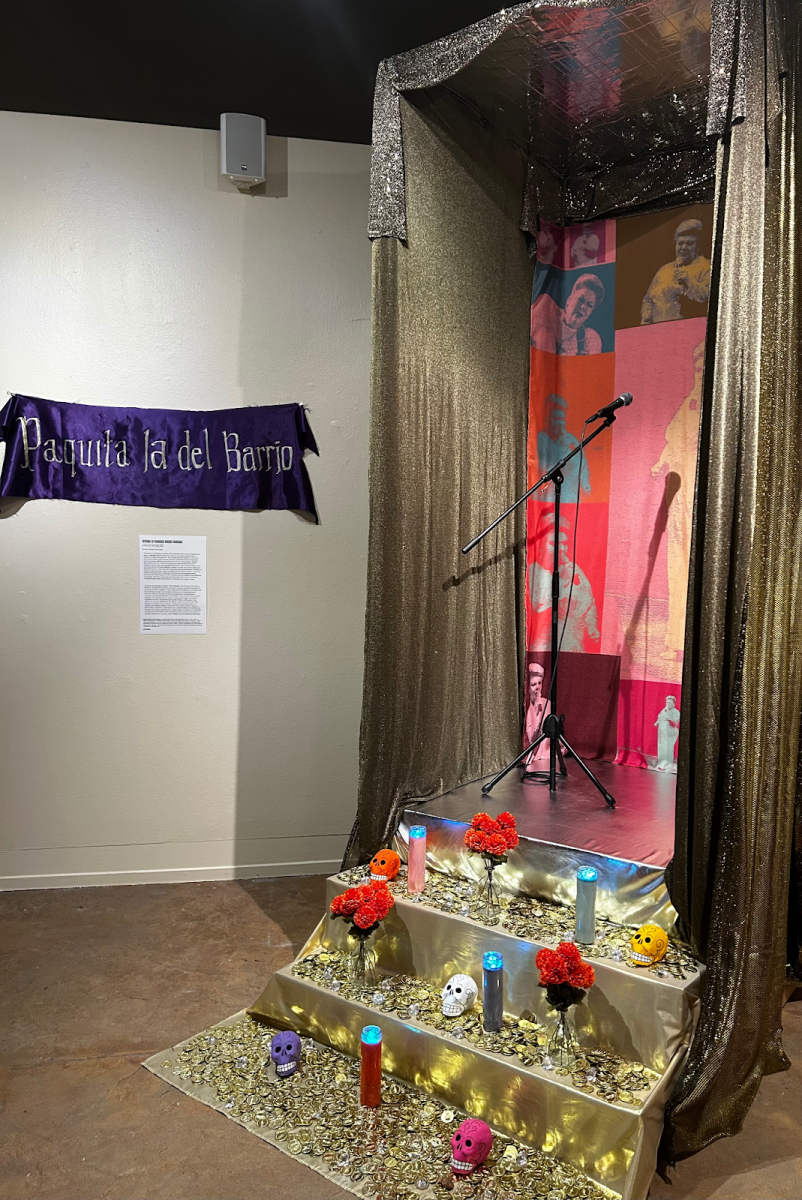
Artist Erik Damien Escovedo honored a group of people in his ofrenda containing the portraits of Indigenous ancestors, or elders, that were activists for Indigenous rights. Escovedo also included relatives that were monumental to his life.
“There are some people who are displayed here that never got to live long enough to become elders, but they’re still elders to us,” Escovedo said. “The ofrenda is talking about activism, but it’s also talking about community and family at the same time.”
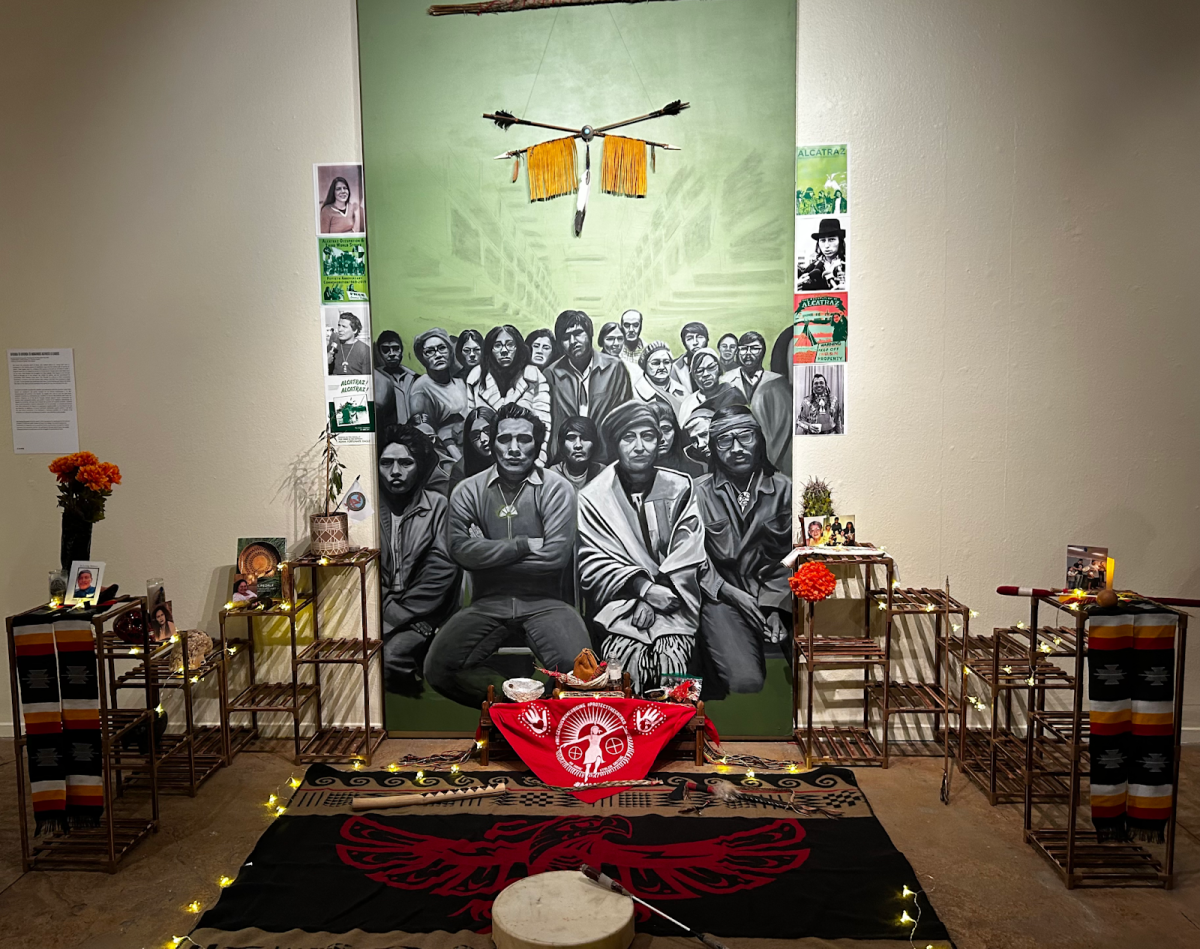
Former FCC college student Jazmin Cardoza explained that she hadn’t been familiar with Ralph Gant until after seeing Ramos O’Casey’s ofrenda. Cardoza found beauty in the themes of remembrance within the ofrendas.
“To me, it’s just always been for my grandma, remembering her and loving her, never forgetting her. It’s important, because you know, it’s our family. We gotta keep it up,” Cardoza said.
Ofrendas are typically built to honor loved ones, but “Monumental Figures” included anyone viewed as impactful to their community regardless of relation.
“It’s about paying respects where respect is due, both when it comes to people that have had influence and protection and love over our lives, but also in the vein of proper source citation,” Ramos O’Casey said. “It can be that much more powerful when we put the proper people behind it.”

